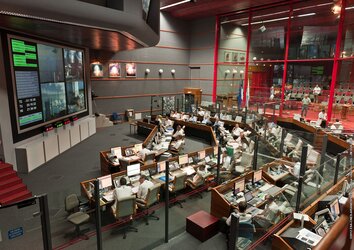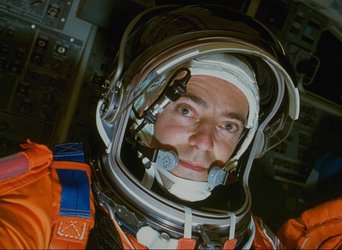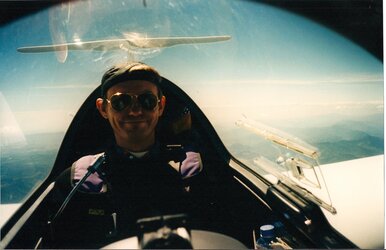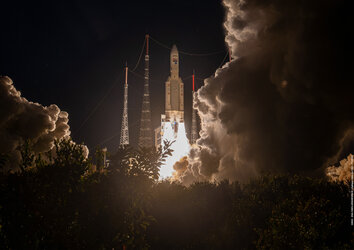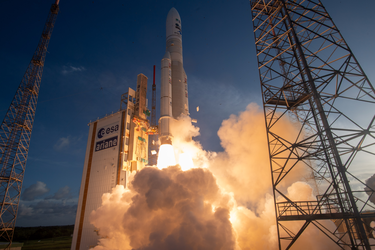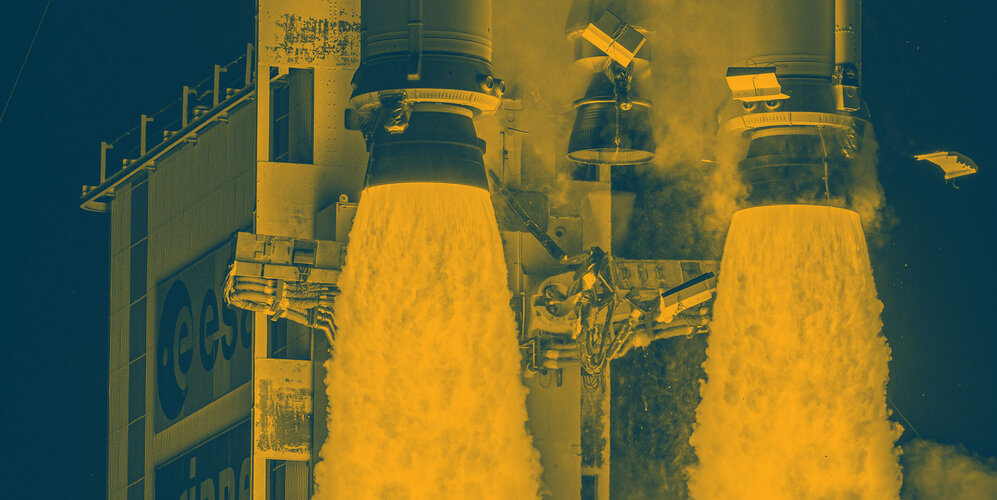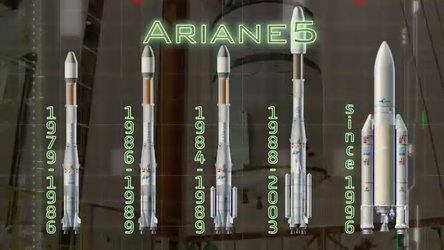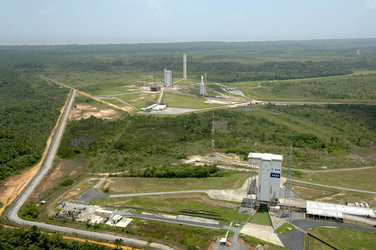Portraits of Ariane 5: No.2, Rüdiger Albat
The Ariane 5 launcher said a graceful goodbye in July after nearly three decades of loyal service. Many people contributed to its success over the years and, in this series of conversations, some have shared their personal and professional experiences with Annia Domènech.
For the second interview, here's Rüdiger Albat, Ariane 5 projects and programme manager from 2003 to 2023.

"I have a long relationship with Ariane. It all started during my studies in the early 1980s, when some guys from Paris came to my university at Munich and told us that they wanted to do something absolutely new: make money in space. They worked for a company with fewer than 50 people and explained that they were bringing the new Ariane into commercial orbits. They would conquer what they called ‘the telecoms market’, which did not exist at that time. It was what today we would call a ‘startup’.
“‘Conquering the telecoms market, making money in space, working in South America…’ all this was very attractive. I kept in touch and I landed a couple of years later in French Guiana with my first job as an engineer. I thought that I would fall in love with Ariane for maybe three years of professional life, it lasted 40!
“I started in this very small team, fewer than 100 people: they were launching Ariane 1s, Ariane 2s, Ariane 3s and, later, Ariane 4s. Then it speeded up, everybody wanted to have a TV antenna on the roof and satellite TV, and later internet and satellite communications. It was a complete transformation of the telecom sector.
“The fleet of Ariane 1 to 4 soon became too small. Ariane 5 could carry two heavy telecoms satellites on a single flight, which was essential in this growing market. Over the years, Ariane 5 became a ‘Swiss Army knife’, one tool with many capabilities: it was the best friend of telecommunications, Earth observation, science (Rosetta or James Webb Space Telescope), navigation (Galileo constellation) and even human spaceflight (cargo to the International Space Station with the Automated Transfer Vehicles, or ATVs).
“Thanks to Ariane, Europeans were attractive international partners, on an equal footing with NASA, JAXA and all other space agencies, for institutional missions. Ariane also played a crucial role in commercial missions. This is something that we Europeans can be proud of.
“For an engineer it was funny to work at the same time on Ariane 1 to 4 and Ariane 5, because they were totally different generations. On the first launchpad, one felt like a member of an Apollo mission: it had the same processing technology and consoles as on Saturn V in the 1960s.
“The second pad, for Ariane 4, was a revolution: it was the first fully digital launch pad, just the right playground for nerds. Jumping from the previous ‘prehistoric’ launch pads to state-of-the-art advanced launch pads with Ariane 4 was something very special.
“On top of this, Ariane 5 was incredible in terms of power. For a young engineer, the power we had in our hands was absolutely thrilling. The current engineering team working on the preparation of the first Ariane 6 flight is also quite young. This is human adventure.
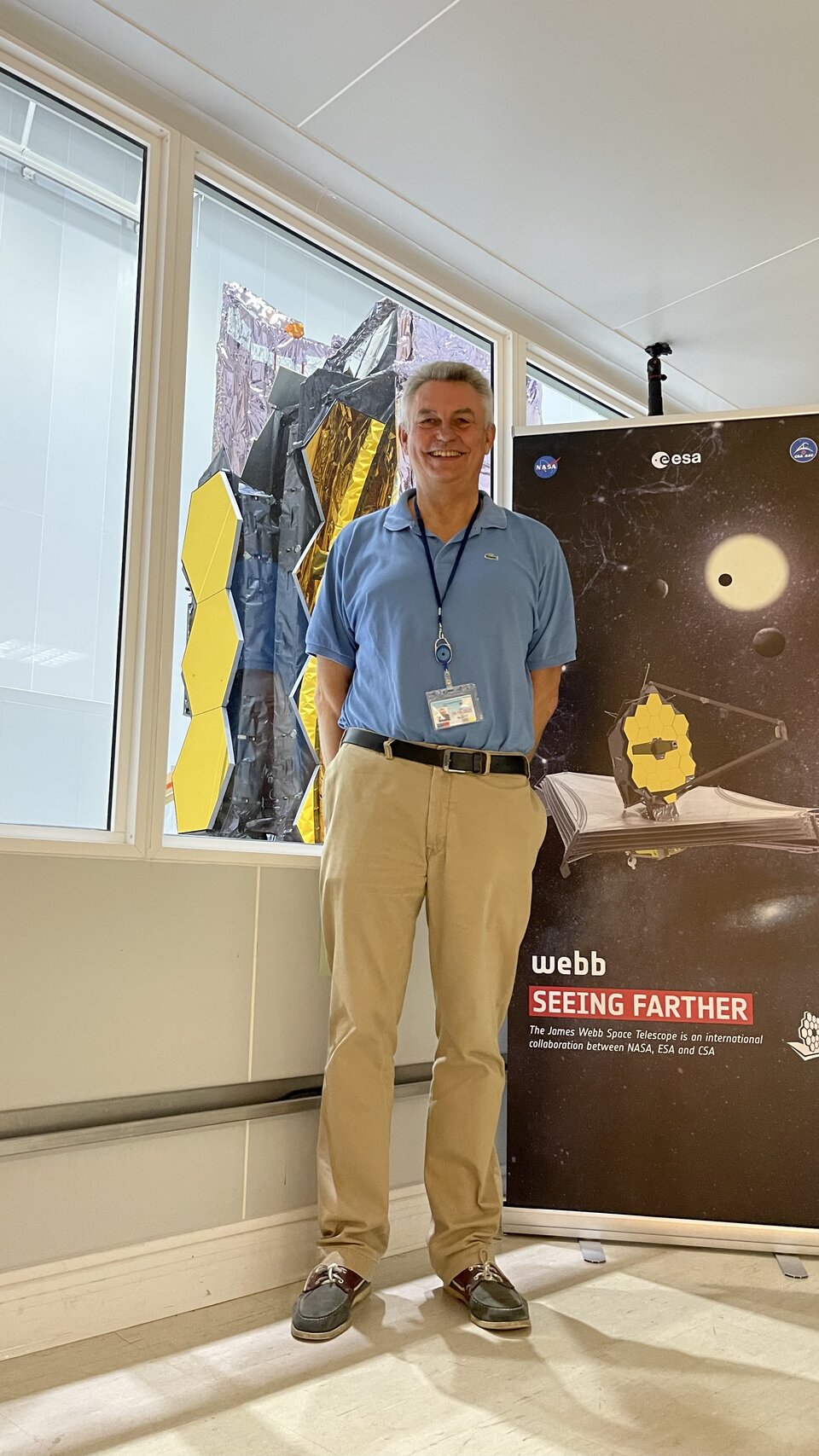
“During Ariane 5’s lifetime, I had many different roles: in launch operations, engineering, in production, development, commercialisation, consulting and in project management.
Working in launch operations is very close to flying. I love to fly; I hold different flying licences. In a plane I am alone or maybe with a second pilot. While launching, there is a cockpit of more than 30 people, each of them has its dedicated role, like in an orchestra.
“Sometimes something happens that was not in the script, it can be anything: non-technical such as a strike in front of the control centre the morning of a launch, or technical such as a loss of redundancy, and you must react like a pilot to unforeseen events. This is pure real-time work, I love it.
“Project management for mission engineering is, in my view, a little bit like haute couture: your team is designing something unique, which will be used only once, for a single flight. It is a real adventure because the missions and the customers are different, but they have one point in common: they have focused for most of their career on one object, for instance the James Webb Space Telescope. When it comes to launch, they must put their beautiful creation into the hands of a launch team, which requires a lot of confidence.
“Juice was another great launch, and so was Rosetta. You are a small part of the framework, but you bring in elements to build new configurations, for instance to fly Galileo or the ATVs. All these were special configurations of Ariane 5, which needed special work. For example, a special version of Ariane 5 was needed to launch satellites for the Olympic Games, eight years ago. We built up the team to get the mission qualified on time, within three months. So, you need to adapt very fast.
“When I started to work, Ariane was a mostly French business, so it was great to improve my language skills! With Ariane 5, all European partners took real design and industrial responsibilities. And they also took risks. Also, it was an enormous pleasure to work in concert with 12 different nations. We were sort of cultural ambassadors between all those national engineers, building the experience of working together in Europe.
“This was a cultural revolution, there was also a technological one: Ariane 5 was bigger than anything launched before in Europe, bigger than anything existing on the commercial market. It was a game changer, and commercial and institutional customers had to trust Ariane. This is something that you need to build up carefully. The colleagues from Ariane 6 will have to do it as well. At the start, users are a bit careful about jumping into a new bird.
“I was highly involved in the last Ariane 4 launches as head of the launch engineering team: in my view, the transition between Ariane 4 and Ariane 5 is comparable to the one between Ariane 5 and Ariane 6. Resources were limited at the end of Ariane 4, so the decision was taken to place maximum focus on getting Ariane 5 ready. I see that the same is under way for Ariane 6, which is good.
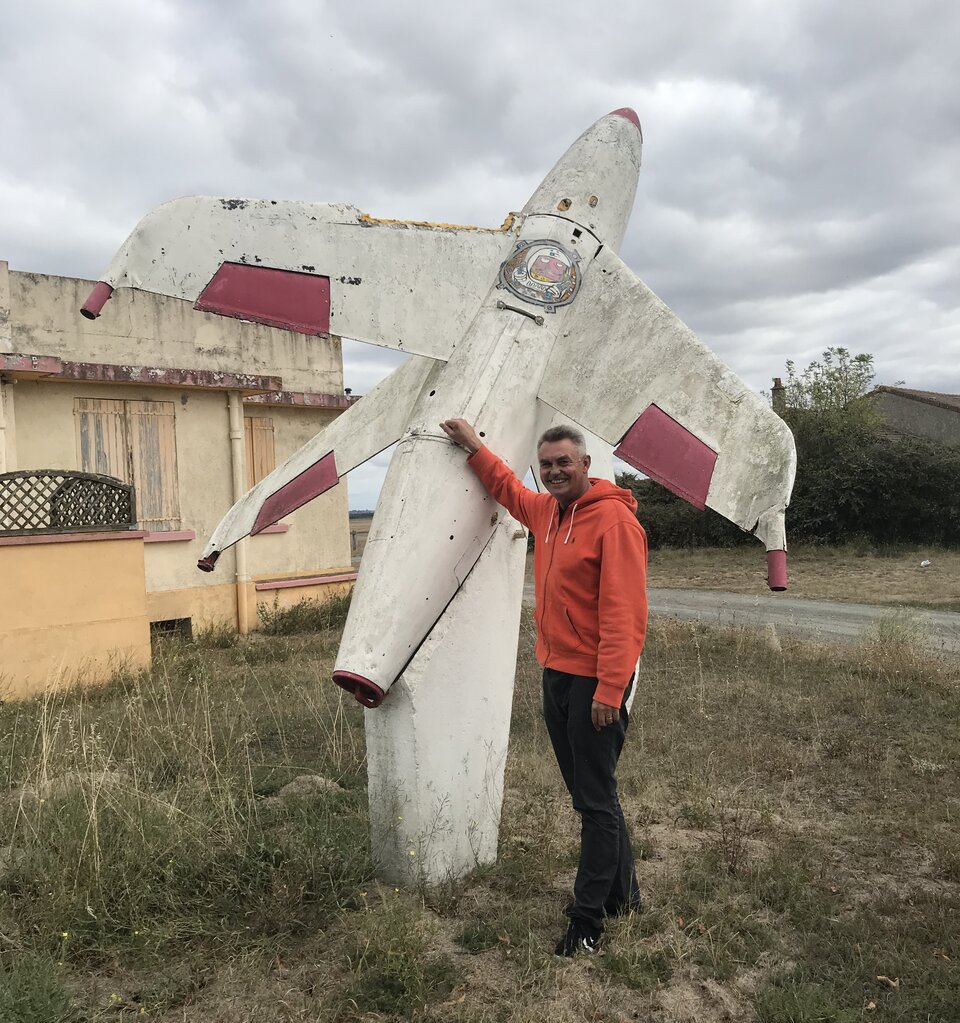
The current period, without overlaps between the old and new launch systems, is generating difficulties, but they are time-limited. Ariane 6 will get off to a good start, and it will simply be a better Ariane 5 in all respects: costs, versatility of missions and growth potential. You must accept that you need to navigate difficult waters when you are in transition to something better.
“I am quite proud to have been part of the game for the launches within ESA, and I have only one regret: I never saw a launch from outside, even though I participated in more than 100 from the launch control centre. Each time I went to Kourou, my bosses wanted me to work on day zero, so I was inside the bunker, in different roles. I am always impressed when I see colleagues returning with big eyes from an observation standpoint during a launch. I look at them and I think that the day will come for me too.”
Ariane 5 had 117 successful launches and placed 239 satellites in orbit. The heavy launcher carried prominent payloads, such as ESA’s comet-chasing Rosetta mission, a dozen Galileo navigation satellites, the James Webb Space Telescope and recently Juice, the explorer of Jupiter and its icy moons.















 Germany
Germany
 Austria
Austria
 Belgium
Belgium
 Denmark
Denmark
 Spain
Spain
 Estonia
Estonia
 Finland
Finland
 France
France
 Greece
Greece
 Hungary
Hungary
 Ireland
Ireland
 Italy
Italy
 Luxembourg
Luxembourg
 Norway
Norway
 The Netherlands
The Netherlands
 Poland
Poland
 Portugal
Portugal
 Czechia
Czechia
 Romania
Romania
 United Kingdom
United Kingdom
 Slovenia
Slovenia
 Sweden
Sweden
 Switzerland
Switzerland


























